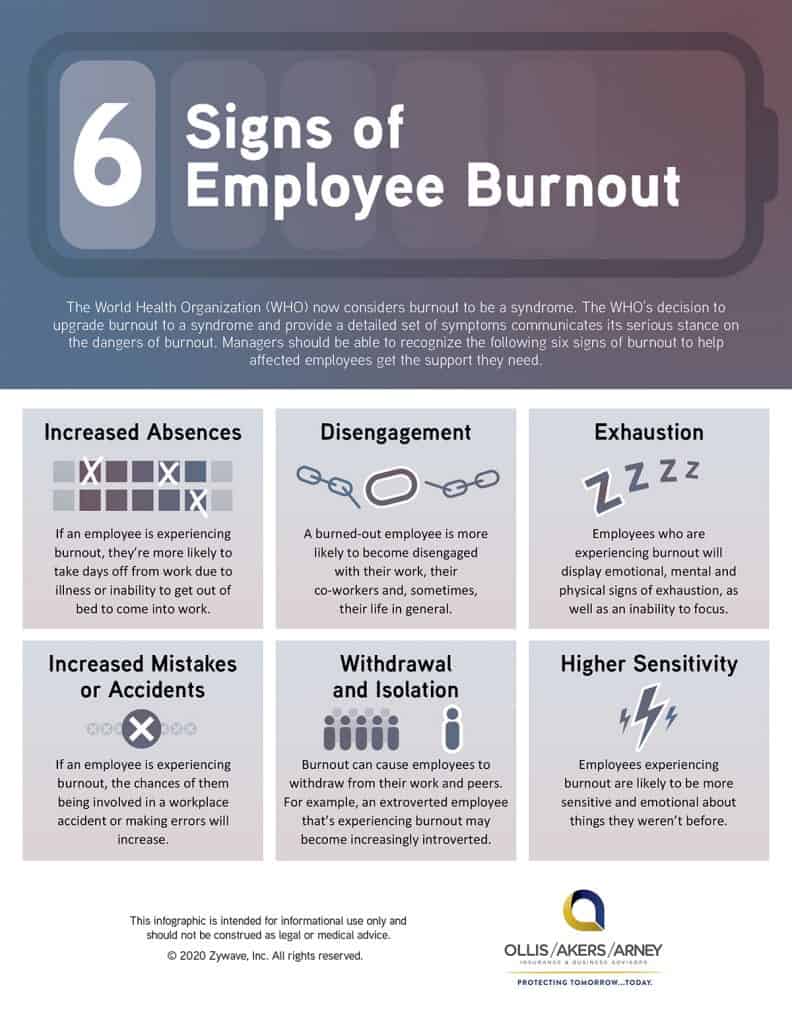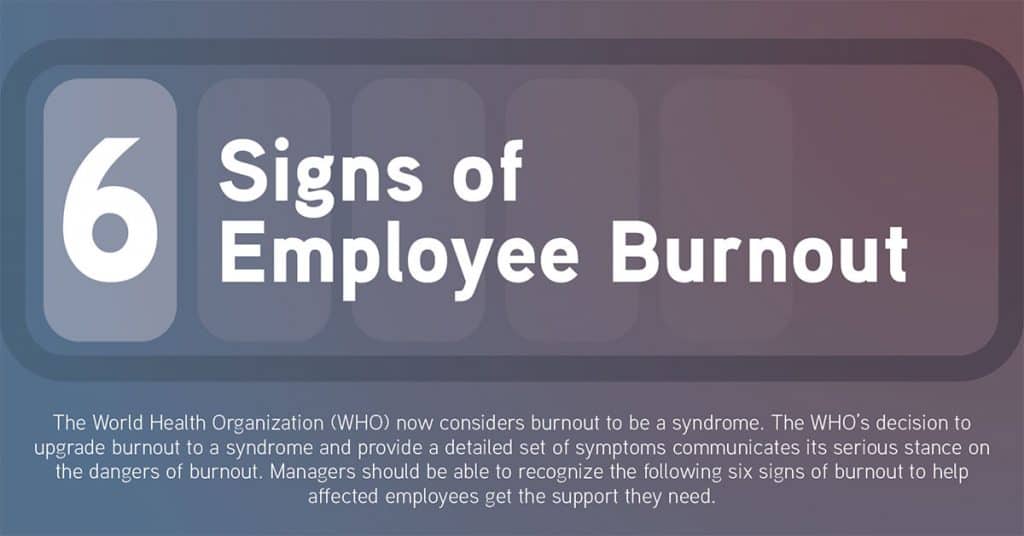
The World Health Organization (WHO) now considers burnout to be a syndrome. The WHO’s decision to upgrade burnout to a syndrome and provide a detailed set of symptoms communicates its serious stance on the dangers of burnout. Managers should be able to recognize the following six signs of burnout to help affected employees get the support they need.
Increased Absences
If an employee is experiencing burnout, they’re more likely to take days off from work due to illness or inability to get out of bed to come into work.
Disengagement
A burned-out employee is more likely to become disengaged with their work, their co-workers and, sometimes, their life in general.
Exhaustion
Employees who are experiencing burnout will display emotional, mental and physical signs of exhaustion, as well as an inability to focus.
Increased Mistakes or Accidents
If an employee is experiencing burnout, the chances of them being involved in a workplace accident or making errors will increase.
Withdrawal and Isolation
Burnout can cause employees to withdraw from their work and peers. For example, an extroverted employee that’s experiencing burnout may become increasingly introverted.
Higher Sensitivity
Employees experiencing burnout are likely to be more sensitive and emotional about things they weren’t before.


